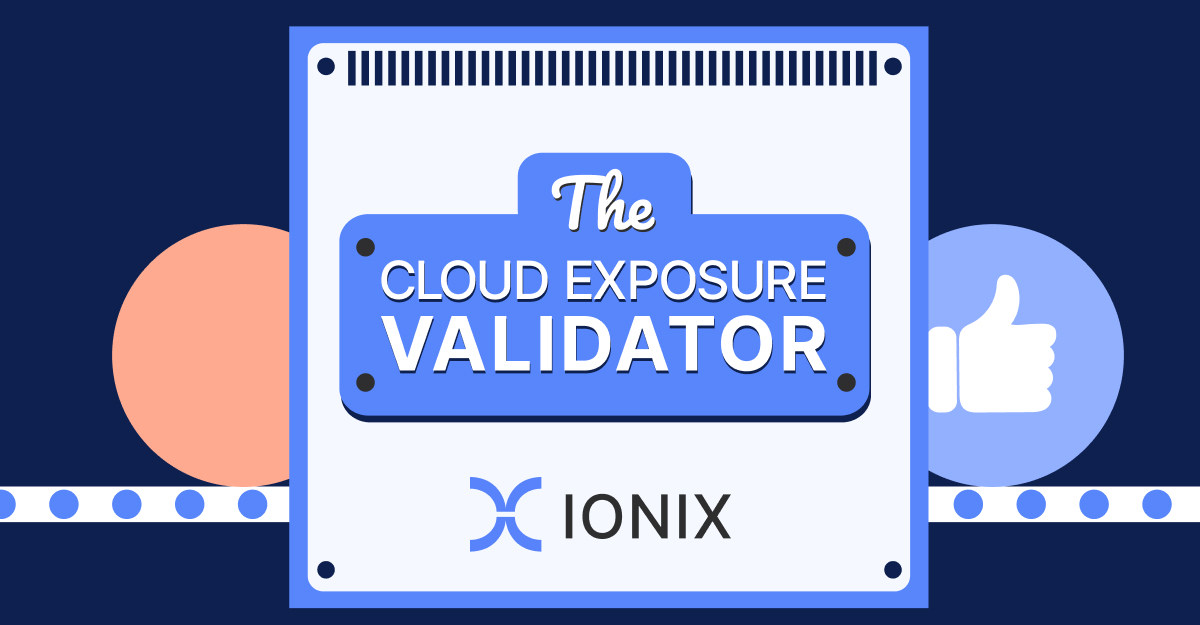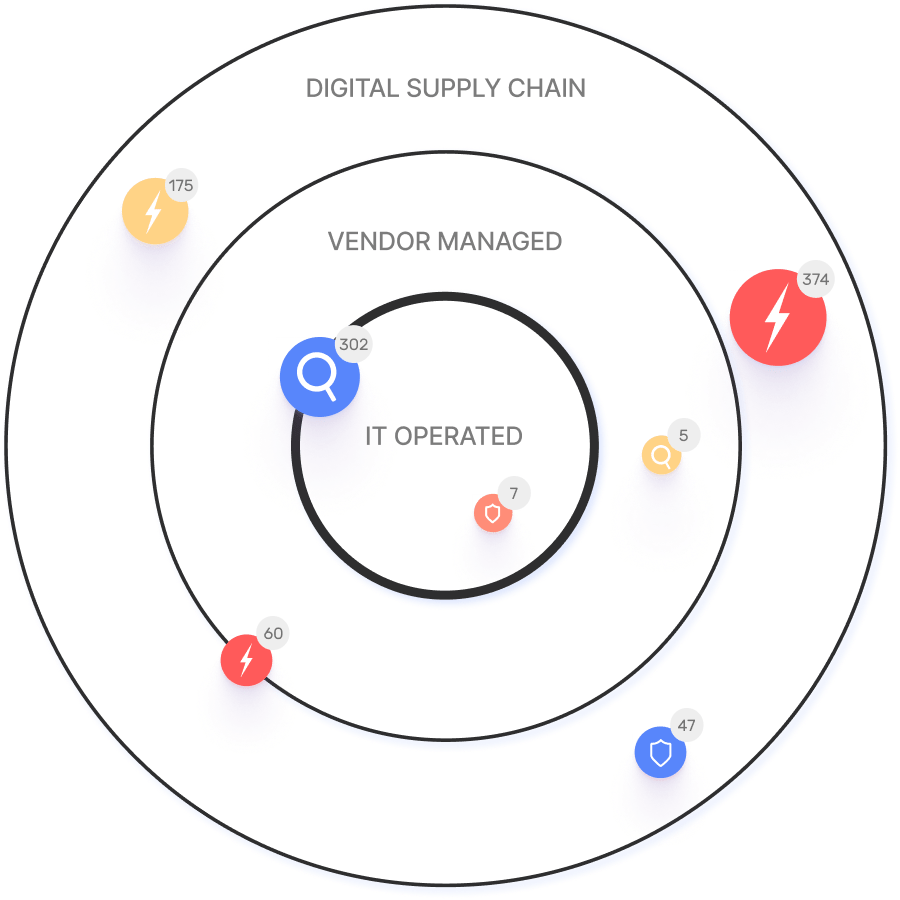Frequently Asked Questions
Product Information & Capabilities
What is IONIX and what does it do?
IONIX is an External Exposure Management platform designed to identify exposed assets and validate exploitable vulnerabilities from an attacker's perspective. It enables security teams to prioritize critical remediation activities by cutting through the flood of alerts. Key features include complete attack surface visibility, identification of potential exposed assets, validation of exposed assets at risk, and prioritization of issues by severity and context. Learn more.
What are the main features and capabilities of IONIX?
IONIX offers Attack Surface Discovery, Risk Assessment, Risk Prioritization, and Risk Remediation. It discovers all that matters, monitors your changing attack surface, and ensures more assets with less noise. The platform also provides ML-based 'Connective Intelligence' for asset discovery, Threat Exposure Radar for prioritizing urgent issues, and comprehensive digital supply chain mapping. More details.
How does IONIX secure web applications and APIs?
IONIX takes an attacker-centric approach to managing threats to an organization’s external attack surface. Through continuous monitoring and attack simulations, it helps companies identify the threats they are most likely to face, allowing limited security resources to be allocated for maximum risk reduction. Book a demo to learn more.
What types of vulnerability scanning and assessment tools are available for web applications?
There are several types of vulnerability scanning and assessment tools for web applications, including Static Application Security Testing (SAST), Dynamic Application Security Testing (DAST), API Security Testing Tools, Web Application Firewalls (WAFs), and Security Monitoring and Analytics Tools. Each tool addresses different stages of the software development lifecycle and unique security threats. Read more.
What are the key components of a comprehensive web application security program?
Key components include secure development practices, web application security controls, and regular application security testing throughout the software development lifecycle (SDLC). These practices help identify, remediate, and defend web applications against vulnerabilities and attacks. Learn more.
What unique security threats do web applications and APIs face?
Web applications and APIs face threats such as SQL injection (SQLi), cross-site scripting (XSS), credential stuffing, and misconfigurations. These vulnerabilities are often unique to web applications and may not be detectable by general-purpose security tools. OWASP Top 10 provides more details.
Features & Integrations
What integrations does IONIX support?
IONIX integrates with tools like Jira, ServiceNow, Slack, Splunk, Microsoft Sentinel, Palo Alto Cortex/Demisto, and AWS services such as AWS Control Tower, AWS PrivateLink, and Pre-trained Amazon SageMaker Models. For a full list, visit IONIX Integrations.
Does IONIX offer an API for integrations?
Yes, IONIX provides an API that supports integrations with major platforms like Jira, ServiceNow, Splunk, Cortex XSOAR, and more. Details are available at IONIX Integrations.
Security & Compliance
What security and compliance certifications does IONIX have?
IONIX is SOC2 compliant and supports companies with their NIS-2 and DORA compliance, ensuring robust security measures and regulatory alignment. Learn more.
Use Cases & Customer Success
Who are some of IONIX's customers?
IONIX's customers include Infosys, Warner Music Group, The Telegraph, E.ON, Grand Canyon Education, and a Fortune 500 Insurance Company. For more details, visit IONIX Customers.
Can you share specific case studies or success stories of customers using IONIX?
Yes, IONIX highlights several customer success stories, such as:
- E.ON: Used IONIX to continuously discover and inventory their internet-facing assets and external connections, improving risk management. Read more.
- Warner Music Group: Boosted operational efficiency and aligned security operations with business goals. Learn more.
- Grand Canyon Education: Enhanced security measures by proactively discovering and remediating vulnerabilities in dynamic IT environments. Details available.
What industries are represented in IONIX's case studies?
Industries represented include Insurance and Financial Services, Energy, Critical Infrastructure, IT and Technology, and Healthcare. See case studies.
Pain Points & Solutions
What core problems does IONIX solve?
IONIX helps organizations identify their entire external web footprint, including shadow IT and unauthorized projects, proactively manage security, gain real attack surface visibility, and maintain continuous discovery and inventory of internet-facing assets and dependencies. These capabilities address challenges caused by cloud migrations, mergers, digital transformation, and fragmented IT environments. Learn more.
What are the KPIs and metrics associated with the pain points IONIX solves?
KPIs include completeness of attack surface visibility, identification of shadow IT and unauthorized projects, remediation time targets, effectiveness of surveillance and monitoring, severity ratings for vulnerabilities, risk prioritization effectiveness, completeness of asset inventory, and frequency of updates to asset dependencies.
Implementation & Support
How long does it take to implement IONIX and how easy is it to start?
Getting started with IONIX is simple and efficient. The initial deployment takes about a week and requires only one person to implement and scan the entire network. Customers have access to onboarding resources like guides, tutorials, webinars, and a dedicated Technical Support Team. Read more.
What training and technical support is available for IONIX customers?
IONIX offers streamlined onboarding resources such as guides, tutorials, webinars, and a dedicated Technical Support Team to assist customers during the implementation process. Learn more.
What customer service or support is available after purchasing IONIX?
IONIX provides technical support and maintenance services during the subscription term, including troubleshooting, upgrades, and maintenance. Customers are assigned a dedicated account manager and benefit from regular review meetings to address issues and ensure smooth operation. More details.
Guides & Resources
Where can I find guides and resources from IONIX?
IONIX provides comprehensive guides, datasheets, and case studies on their resources page. Explore these materials at IONIX Resources and IONIX Guides.
What topics are covered in IONIX's guides?
IONIX's guides cover topics such as Automated Security Control Assessment (ASCA), web application security, exposure management, vulnerability assessments, the OWASP Top 10, CIS Controls, and attack surface management. Each guide includes detailed articles, methodologies, and actionable advice. Explore guides.
Performance & Recognition
How is IONIX recognized for product performance and innovation?
IONIX earned top ratings for product innovation, security, functionality, and usability. It was named a leader in the Innovation and Product categories of the ASM Leadership Compass for completeness of product vision and a customer-oriented, cutting-edge approach to ASM. See details.
Competition & Differentiation
How does IONIX differ from similar products in the market?
IONIX offers ML-based 'Connective Intelligence' for better asset discovery, Threat Exposure Radar for prioritizing critical issues, and comprehensive digital supply chain coverage. It reduces noise, validates risks, and provides actionable insights, ensuring maximum risk reduction and operational efficiency. Learn more.
Why should a customer choose IONIX?
Customers should choose IONIX for its better discovery capabilities, focused threat exposure, comprehensive digital supply chain coverage, and streamlined remediation. IONIX finds more assets than competing products while generating fewer false positives and offers simple action items for IT personnel with off-the-shelf integrations for ticketing, SIEM, and SOAR solutions. See why.
Target Audience
Who is the target audience for IONIX?
The target audience includes Information Security and Cybersecurity VPs, C-level executives, IT managers, and security managers. IONIX is tailored for organizations across industries, including Fortune 500 companies.




